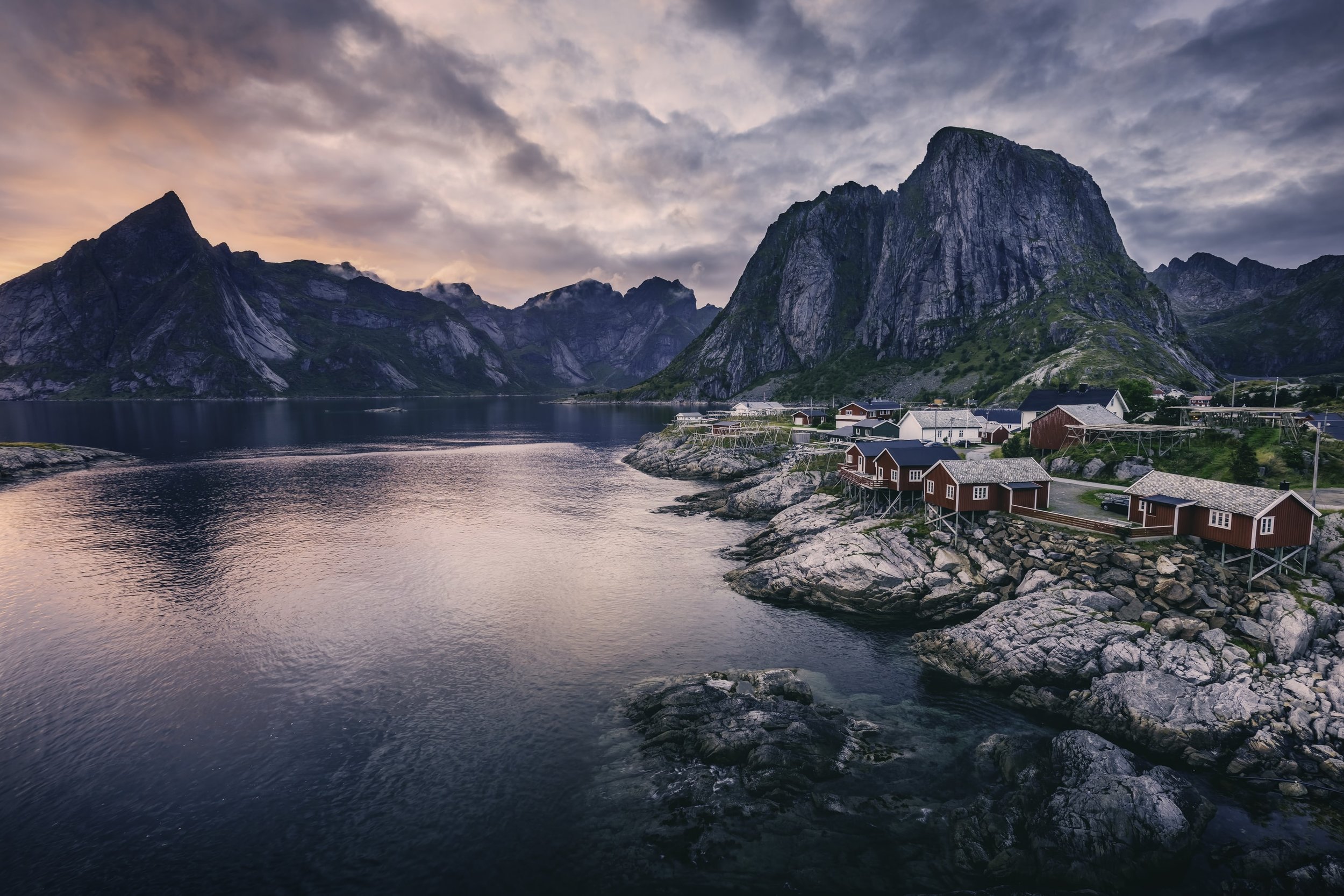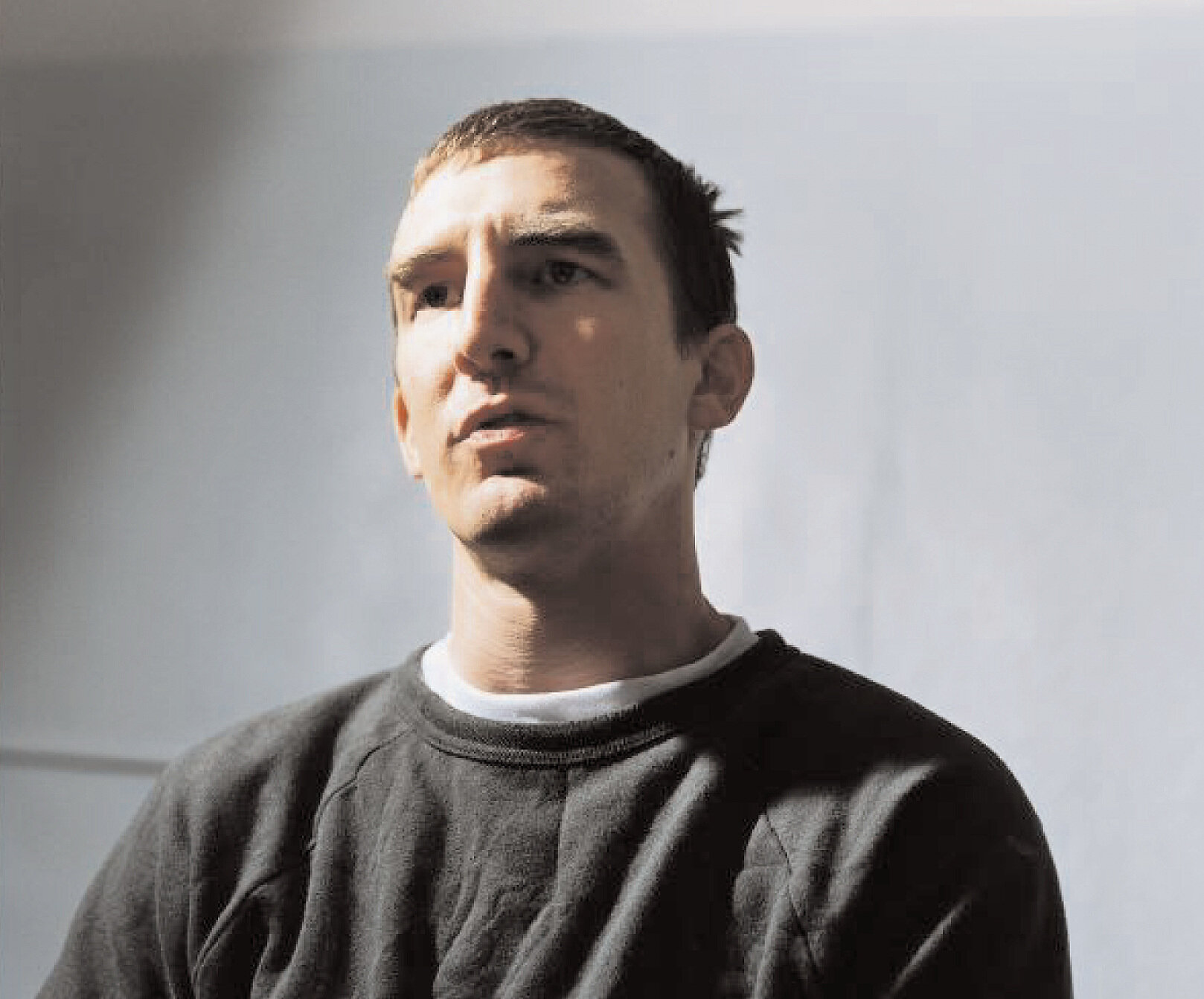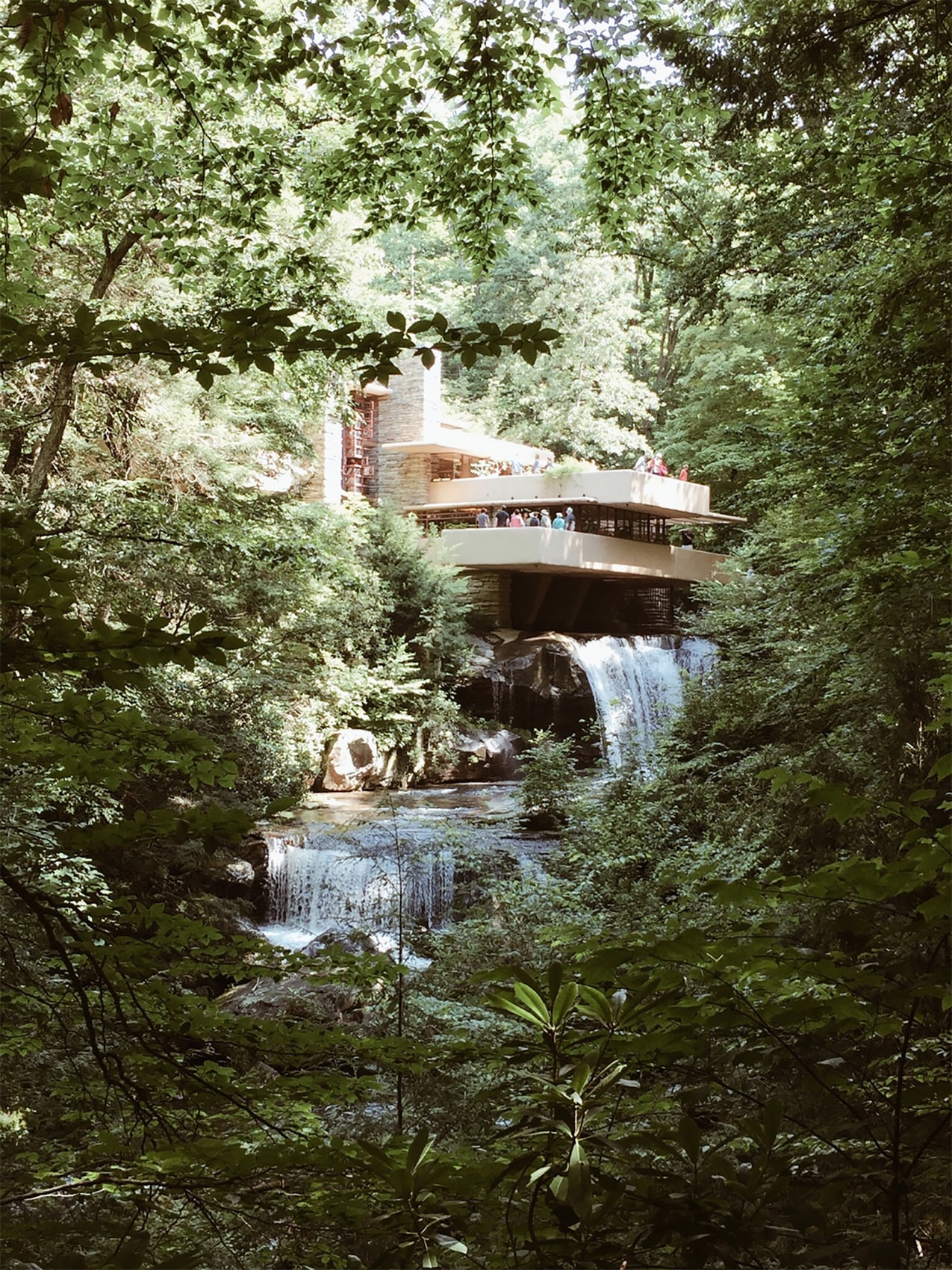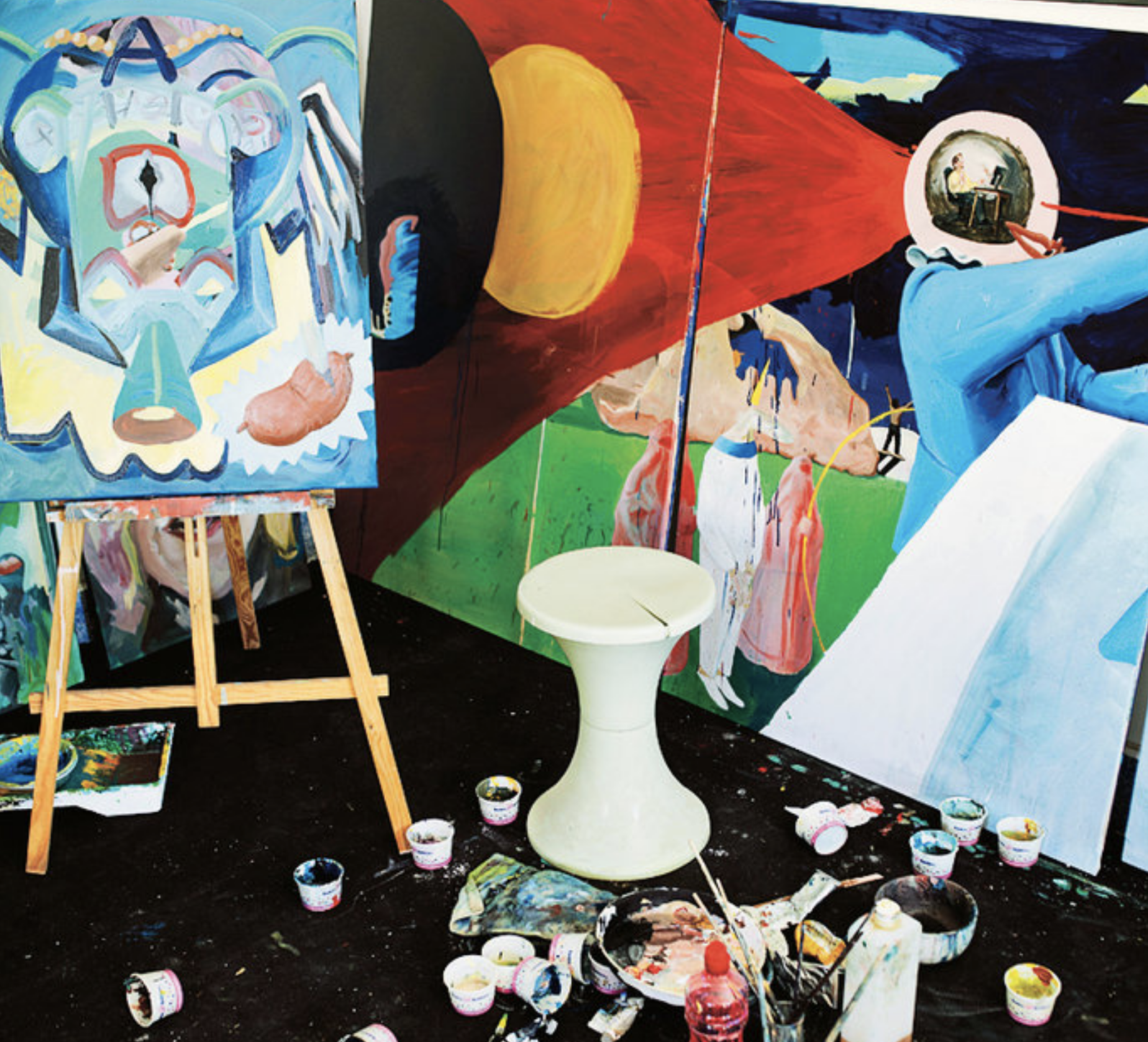Cold Rush

NEW YORK TIMES TRAVEL MAGAZINE
NOVEMBER 2009
I didn’t want to be famous, but the Norwegians insisted. The smiling weatherwoman, the thumbs-up cameraman standing in the snow, even the delighted caterer, who really should not have cared one way or the other, each wanted me to sit on a half log draped in reindeer fur and say things in English to their morning TV audience.
To be honest, I felt ashamed. And a little embarrassed. I had only come to Norway to ski, and maybe write some words about it, not to make a fuss or have makeup put on me in front of little skiing children. But here I was, seated next to a beautiful Norwegian Katie Couric, at the base of a little Hobbit hill, a frozen valley beneath us, a staged cooking fire at my back, unsure of what these people wanted from me. I considered running off but wondered how that might look.
A day earlier, the weather lady had spotted me in a blue-and-white-shuttered cafe, eating strudel as a soft snow fell on Geilo, a small resort village in the center of the southern bulge of Norway. She was amazed that an American journalist had arrived in her country, and she offered her guidance. “We Norwegians,” she said, “have a profound love of the outdoors. It is our myth we tell ourselves.” They are, like our Coloradoans, a race of hikers, bikers, skiers and conscientious caretakers of the global environment.
It would be a coup if she could bring back an American to her producer and host. But now the host, sheathed in a Bond-girl snowsuit, her face encircled by a nimbus of what resembled the white fur of a polar bear cub, had turned to me with dazzling blue eyes that caught me off guard. “So,” she said. “What do Americans think of Norway?”
Why must they always ask that question?
I waffled and said something about eating raspeballer, the nation’s culinary take on mashed potatoes shaped like meatballs and stuffed with salted pork. What I should have said is, we approve — since I seemed to be the sole United States representative to the entire kingdom. As beautiful and dramatic as Norway is, with its magical fjords and snow-globe fishing villages, it does not seem to be on many people’s to-do lists. Which is a nice thing indeed if you like your travel to be free of people like yourself and you don’t mind being treated as a curiosity.
Geilo is a mountain town halfway between Oslo in the east and Bergen, the country’s second-largest city, on the west coast. Once a small community of farmers and blacksmiths, the modern town was born in 1909 with the arrival of the Bergen Railway. On the same day the railway was inaugurated, Dr. I. C. Holm, Norway’s top respiratory therapist, opened a sanitarium here, offering dry mountain air to clients from both coasts. Today two ski areas flank the broad Ustedalen valley, with 40 slopes covering 21 miles, all of which make up the Geilo Skiheiser.
There are six resort hotels, including the Dr. Holms Hotel. It sits across the road from a little mustard-colored train depot that once received the worried wealthy and now welcomes about 120,000 people during the busiest months, many of them families with small kids. I arrived midweek before a big national holiday and found myself sharing the hotel and the slopes with a smattering of people, all excited about the coming ski hordes.
If you’ve seen “The Shining,” you have a fair idea of what the Dr. Holms Hotel looks like inside and out. It was once occupied by the Nazis, who used it as a retreat for submarine officers and as a place to rear the children of soldiers and the Norwegian girls who fell in love with them. Its 127 rooms, clapboard exterior, hipped red roofs and columned entry dominate the little town, which is not much more than a tourist-friendly strip of shops for ski wear and groceries. There are dark oil paintings in the lobby and a grand staircase. In the carpeted lounge upstairs, which hosts a busy après-ski scene, little pigtailed girls in snow pants look like they popped off a cocoa label. The hotel is popular for drinks and dinner and provides the village its emotional center.
“My daughter and I both love racing — we ski for several hours during the day with only our packs, some water and oranges,” said Oystein Maeland, an athletically trim 60-year-old former police officer who had formally introduced himself to me in the hotel’s chandeliered dining room one night. He was staying there with his 22-year-old daughter and was speaking, of course, of cross-country skiing. “We don’t do the lazy skiing,” he said.
By that he meant downhill, where gravity does much of the work. I could see his point. Norway is a perfectly nice place for downhill skiing, with plenty of intermediate blue and green runs. But its five black diamonds offer only short bursts. If you want the adrenaline rush of alpine skiing, you’re better off in the Alps or Aspen, Colo.
I had spent my first day practicing turns and working on speed but not working up much of a sweat. And since I had the broad, well-groomed slopes practically to myself, and could stop whenever I liked to take in the view, I felt satiated in only a few hours. The real charm here is the gradual pace of it all, and the dramatic wide-open landscape.
The heart of the region is the Hardangervidda, reached via ski lift from Geilo, a treeless moor 3,500 feet above sea level and one of the most beautifully desolate landscapes on the planet. A former mountain range leveled by ice age glaciers, it is the largest eroded plain in Europe, some 2,500 square miles of undulating snow fields with glassy frozen lakes in winter and mossy, craggy rocks in summer. It is home to Arctic fox, snowy owl and Northern Europe’s largest herd of reindeer, which migrate from one end to the other. The bedrock is mostly Precambrian, and its highest point, the Hardanger glacier, reaches 6,112 feet.
Norwegians are understandably proud of this natural birthright and the independence it affords. It’s amazing to see a dozen of them out
on the barren plateau, 100 miles from civilization, each veering off in a different direction, arms and legs pistoning, a sled attached by ropes
to their waists, a shovel on their backs, heading out to the buried roof of a cabin to dig and sit and ponder.
“It’s a very weird culture,” Magnus Nyborg, a 19-year-old snowboarder, explained to me on the train ride in from Bergen. Four trains make the three- to four-hour trip daily from both Bergen and Oslo, passing desolate snow fields dotted by solitary figures and the tiny jet trails of their skis. “We travel all this way just to walk around in the snow and then maybe sit and hang out.”
Nyborg was a friendly and polite kid whose father develops rural land for vacation houses. He wore a knit cap with Kurt Cobain bangs sticking out. He enjoyed what he considered my misconceptions about his country. “We do not call them fjords,” he said. “We call it the sea because that’s what it is. Fjords is a nice exotic tourist name.” He pointed out a guitar-shaped house in the snow, owned by Kurt Nilsen, the plumber-turned-Norwegian-“Idol”-star who won the “World Idol” title in 2004, beating out a runner-up named Kelly Clarkson. We passed a teenager on a potato wagon pimped out with speakers blasting Norwegian hip-hop. “The farms are all losing their kids because they don’t want to farm,” he told me.
Norway’s oil economy has left many Norwegians wealthy — and conflicted about how their new status fits with their old values. This is a country where, until the 1970s, the main export was salmon and other fish. Resort villages like Geilo have seen explosive growth in large weekend homes. “Posh cabins,” Nyborg called them, decked out with flat-screens, Internet and high-speed fiber optics. “For me,” he said, “that’s kind of wrong.”
The cabin boom, which started in 2000, has added about 100 new houses a year to a town of only 2,500 inhabitants. Where once were swaths of pristine snow and tracks, there are now the brown roofs of cabins. The story is typical (farmers sold big plots and got out), but it seems to befuddle the slow-to-change Norwegians. The community can feel overwhelmed when the holiday crowds arrive. And there is anxiety about how these modern lives are changing familial, tied-to-the earth traditions.
“Many people, like myself, feel it went a little too fast,” said Jon-Andreas Kolderup, a 69-year-old former oil worker who spent childhood weekends nearby in a simple cabin with six beds, a living room and a small kitchen. “We see people come on Friday to work from the cabin for two days. It makes no sense.” It was Saturday afternoon, and Kolderup and I were standing on the back porch of Hallingstuene, a traditional restaurant behind the depot, down the street from the small Geilo Hotel, where coach drivers changed horses at the turn of the last century. The place was cozy, done up in painted logs and canopied booths, themselves like little cabins inside. The 54-year-old owner, Frode Aga, often makes the rounds in a cook’s coat, telling off-color jokes that everyone hopes to hear. A former chef on a popular TV show, Aga uses only Norwegian meat, like reindeer, elk, grouse and wild lamb — “the same race from when the Vikings were here,” he told me.
Kolderup, a county councilman, and Aga are neighbors. The restaurant was empty as they stood on the porch discussing the need to upgrade the state road and improve train service. Both are things that increase growth, not slow it, and so they were conflicted. It turns out most of what they were feeling is the dissolution of community and of a collective destiny. “Those who sold have not been good enough to reinvest in things like a new grocery,” Kolderup said. “I drive to the next town for groceries. We’d like to see people reinvest.”
The town center was swarmed with SUVs — the Norwegians had emerged and were stocking up on local salmon and goat cheese. I took a lift to the top of the mountain and found a wonderland of hundreds of skiers. Trails into the Hardangervidda looked like a conga line at points. There were men who were shirtless and sweating. Families were having picnics, set up on lichen-cushioned rocks, eating oranges, while grandmothers aerobically glided past, pulled by golden retrievers. At the top of a long incline, there was suddenly no one and I was alone with my thoughts, as if I were on top of the world all by myself. Then I crested another ridge and there were dozens of cabins sprouting like mushrooms in snow.
I ran into a lanky 40-year-old carpenter named Rune Bakken, a former board member of Geilo’s cross-country ski club. He and several other people were off on a six-hour run and invited me along. I declined. Six hours was a long time to be gliding around in the snow. And besides, I hadn’t brought my oranges or my shovel. “People are building huts as big as possible,” he said, standing there in his black spandex and pointing over the ridge. “Over 1,000 square meters. And what for? Everything you want is out here. It is a waste.”
On another crisp morning, I headed to the train depot and joined the colorful crowds, decked out in their snow bibs and polarized goggles, to head west, across the northern edge of the Hardangervidda, to see more of Norway. First stop, the highest point of any railway in Scandinavia, the tiny outpost of Finse. The 40-minute ride was surreal: as the train gradually climbed 1,400 feet, whipped-cream snow fields were tinted pink and orange as I sipped espresso in the cafe car and squinted hard to be sure I really did see a lone figure a mile off, heading into a whiteout nowhere. To the north, the Hallingskarvet mountain range reared up like a buried mastodon.
When the train reached Myrdal, some of us boarded a train on the Flam Railway, one of the world’s steepest, which corkscrews through misty mountain passes, past cliff-hugging hamlets draped in rainbows, and skirts the Kjosfossen waterfall, pausing long enough for us to snap pictures. In spring the falls are a powerful 305-foot wall of rushing snow melt; in winter they’re a frozen curtain strewn with lights. As we glided down toward the village of Flam, the tracks leveled out into lush green valleys, as if winter had suddenly turned into spring.
We had an hour in Flam before the ferry took us across the Aurlandsfjord. I sat on the dock, ringed by majestic mountains that plunge into the icy blue fjord, the village of 350 quiet and empty except for the 30 or so tourists sifting through the troll and Viking dolls at the dock-side shops. Morten Seim, a local taxi driver who was drinking coffee near me, said he had wasted 20 years of his life driving a cab here and should have left when he was young. I hadn’t expected such candor. “What can I do?” he said. “The boats come and the boats go. I just wait.” Behind a cafe serving burgers and fries, I found three local guys hanging out by a parked car. One of them, Torjus Hilstad, had graduated from college two years ago, had married and was back home working in tourism. “Life here is like a light switch. Mid-May, turn on, mid-September, turn off,” he said, referring to the crowds that come and go with the seasons. “I snowboard in winter and go on welfare. My wife and I have two 165-pound South African Boerboel dogs to keep us company in the boring months. You need plenty of hobbies here to survive.”
Soon the ferry horn blew, and we abandoned the locals for the trip down the fjord. On either side of us, 6,500-foot snow-tipped mountains wreathed in clouds created Rorschach images in the mirrored water. The fjord, carved by glaciers during the last ice age, rolled past and revealed behind blind turns isolated communities no bigger than a few wooden houses sitting on spits of grass or rocky land. Thin waterfalls threaded the cliff face. There were no people around. The ferry passengers became silent, as if we were passing backward through time or through a somber cathedral.
Back in Geilo, the hotels started getting loud. Even though the Norwegians have their cabins, they hit the hotels at night, sometimes for dinner but, for the younger crowd, mostly just to party. The scene is nothing like it is in the Alps, in places like St. Anton in Austria, which resemble a European disco in ski wear. On this particular night, the Dr. Holms upstairs lounge and its smoking balconies were jampacked as the stereo blasted 1970s Eric Clapton.
But the place to be was down the hill, past the now sleeping town center, at the Thon Hotel Highland. Snowboarders from all over Europe had turned out earlier in the day for a competition hosted by Andreas Wiig, Norway’s Winter X Games gold medalist. The place was packed with 300 20-somethings there to see the Swedish hip-hop artist Timbuktu.
Norway’s newfound wealth has created an underclass of service workers, many of them from neighboring Sweden, where the economy is tanking. As a result, there is a lot of class anxiety among the young Swedes who flock here to work in the hotels and bars, most of it aimed at their youthful and privileged Norwegian counterparts. “They’re lazy and think they don’t have to work,” a young Swedish waitress at the Dr. Holms told me. About 20 yards away, Timbuktu strutted across a stage, belting his reggae hip-hop. “Look at this dumb girl right here,” she said. A drunk girl had knelt down behind a friend, trying to get another friend to push her over. “This is a fun thing to Norwegians. Why?”
For their part, the Norwegians — whose country was once part of Sweden — remain stoically Viking about it. As Nyborg said to me, “We are people of nature. They are not.”
I ran into Rune Bakken, the carpenter and cross-country-skiing enthusiast, standing by the stage in a gray hoodie and baggie pants. He handed me a beer. Over the thump of Timbuktu’s “Tack for Kaffet” (“Thanks for the Coffee”), he asked how my day had been. I told him it was glorious. “We have the best nature!” he said, staring at the strutting rapper. “What can I say? We have the best, best nature.”




